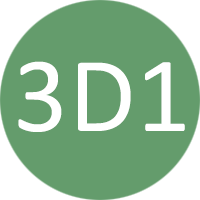A Landscape and Visual Impact Assessment (LVIA) is an essential tool used to evaluate the potential effects of a proposed development on the surrounding landscape and visual environment. It helps ensure that any changes to an area’s natural or built environment are carefully considered, minimizing negative impacts and preserving its aesthetic qualities.
In the LVIA process, landscape architects play a crucial role. Their expertise in landscape design, ecological considerations and visual integration can significantly contribute to the assessment and planning of a project. Let’s take a closer look at what landscape architects can do in the LVIA process and the valuable contributions they can make:
Site Analysis and Assessment
They can contribute to the baseline assessment by conducting site analysis and assessing the existing landscape character, vegetation, topography and visual qualities of the area. They can also provide valuable insights into the site’s natural features, cultural significance and ecological value.
Visual Impact Assessment
Landscape architects can assist in conducting the visual impact assessment, using their design and visualization skills. They can create visual simulations, photomontages, or digital models to illustrate how the proposed development will visually integrate with the existing landscape. These visualizations can help stakeholders understand the potential changes and make informed decisions.
Landscape Design and Mitigation Measures
Landscape architects can propose design alternatives and mitigation measures to minimize or offset any negative landscape and visual impacts identified in the LVIA. They can suggest landscape design interventions, such as incorporating green buffers, preserving or enhancing key views, integrating native vegetation or utilizing sustainable materials, to enhance the project’s visual integration and minimise its footprint.
Collaboration and Coordination
Landscape architects can collaborate with other professionals involved in the LVIA process, such as planners, architects, ecologists and engineers. By working together, they can ensure that the LVIA considers multiple perspectives and that the proposed development aligns with the broader landscape planning objectives and environmental considerations.
LVIA Team Member
Landscape architects can be part of the multidisciplinary team responsible for conducting the LVIA. They can contribute their expertise in landscape design, planning and ecological considerations to assess the potential impacts and propose appropriate mitigation measures.
Documentation and Reporting
Landscape architects can contribute to the preparation of the LVIA report. They can provide written descriptions, design sketches, and recommendations related to landscape and visual aspects. They can also contribute to the development of management and monitoring plans to ensure the implementation of mitigation measures.
It’s important for landscape architects to stay updated with relevant LVIA guidelines, standards and methodologies in their respective jurisdictions to effectively contribute to the process. Additionally, maintaining strong communication skills, collaborative abilities and a solid understanding of landscape planning principles will be beneficial when engaging in the LVIA process.



